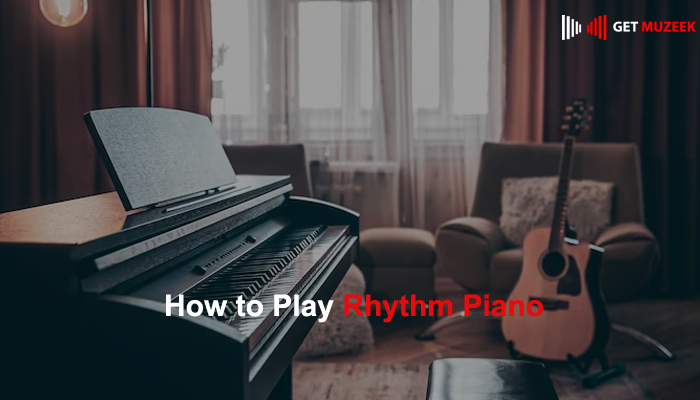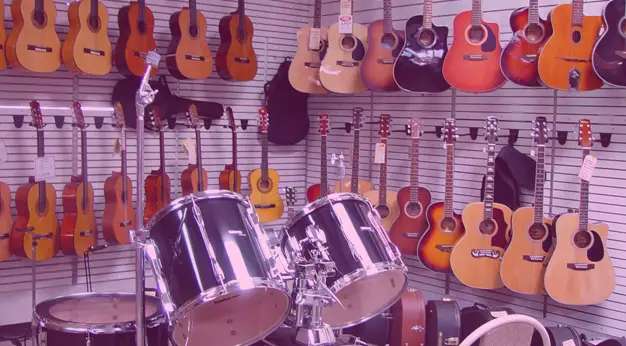
Are you eager to unleash your inner pianist and add a captivating rhythm to your music? Look no further! In this comprehensive guide, we will delve into the world of rhythm piano and equip you with the skills and techniques necessary to become a master of groove.
Whether you’re a beginner or an intermediate player, this article will provide you with a step-by-step roadmap to enhance your rhythmic abilities on the piano.
How to Play Rhythm Piano
Playing rhythm piano requires a solid understanding of timing, coordination, and the ability to create a compelling groove. Let’s explore the essential steps to play rhythm piano like a pro.
1. Master Your Timing and Rhythm
Timing and rhythm are the foundation of any musical piece. To play rhythm piano effectively, it is crucial to develop a strong sense of timing and keep a steady beat. Here are a few tips to improve your timing skills:
- Metronome Magic: Practice with a metronome to develop a consistent sense of timing. Start at a slow tempo and gradually increase the speed as you become more comfortable.
- Tapping Your Foot: Tap your foot to the beat while playing. This physical connection with the rhythm will help internalize the timing.
- Syncopation Sensation: Experiment with syncopated rhythms by accenting off-beats. This technique adds an exciting groove to your playing.
2. Understand Basic Chords and Voicings
Chords form the backbone of any musical composition. Familiarize yourself with basic chords and voicings to create compelling rhythm piano accompaniments. Here’s what you need to know:
- Major and Minor Triads: Start by mastering major and minor triads in all 12 keys. These three-note chords provide a solid foundation for rhythm playing.
- Seventh Chords: Expand your chord vocabulary by learning seventh chords. Dominant, major, minor, and half-diminished seventh chords are commonly used in various musical genres.
- Inversions and Voicings: Experiment with different inversions and voicings of chords to create interesting rhythmic patterns. This adds depth and variety to your playing.
3. Groove with Left-Hand Patterns
The left hand plays a pivotal role in rhythm piano, providing a solid groove and bass foundation. Here are some left-hand patterns to get your fingers grooving:
- Walking Bass Line: Play a steady bass line, moving from one chord to another. This technique adds movement and energy to your playing.
- Root-Octave Technique: Alternate between playing the root note and its octave in a rhythmic pattern. This creates a driving, percussive effect.
- Strumming Rhythms: Emulate the strumming technique of a guitarist by playing rhythmic patterns with your left hand. This technique is particularly effective for accompanying singers or playing in a band setting.
4. Enhance Your Right-Hand Technique
The right hand adds melodic and harmonic elements to your rhythm piano playing. Strengthen your right-hand technique with the following exercises:
- Syncopated Melodies: Practice playing melodies that emphasize off-beats and syncopated rhythms. This adds a rhythmic flair to your playing.
- Arpeggios: Master arpeggios in various positions and inversions. These broken chords create a flowing, melodic texture.
- Melodic Fills: Experiment with adding fills and improvisations in between chord changes. This injects creativity and personality into your playing.
5. Explore Different Rhythmic Styles
Rhythm piano spans across a wide range of musical genres. Expand your repertoire by exploring different rhythmic styles and adapting them to the piano. Here are a few styles to dive into:
- Blues Piano: Learn the 12-bar blues progression and incorporate bluesy licks and techniques into your playing.
- Latin Rhythms: Experiment with Latin rhythms like salsa, bossa nova, and tango. These infectious beats will get your fingers dancing on the keys.
- Funk and R&B: Delve into funk and R&B grooves by incorporating syncopated rhythms, staccato playing, and dynamic accents.
6. Play Along with Recordings
Immerse yourself in the world of rhythm piano by playing along with recordings of your favorite songs. This allows you to develop a keen ear for rhythm, improve your timing, and internalize the groove. Analyze the piano parts, experiment with variations, and make the music your own.
Frequently Asked Questions
Q1: Can I learn rhythm piano without any prior piano experience?
Absolutely! Rhythm piano can be learned by beginners with dedication and practice. Start by building a strong foundation in basic piano techniques and gradually incorporate rhythm exercises into your practice routine.
Q2: How long does it take to become proficient in rhythm piano?
The time it takes to become proficient in rhythm piano varies from person to person. With consistent practice and focused effort, you can expect noticeable progress within a few months. However, mastery is an ongoing journey that requires continuous learning and refinement.
Q3: Is it necessary to learn music theory to play rhythm piano?
While music theory can provide valuable insights, it is not essential to play rhythm piano. You can start by learning basic chords, rhythms, and patterns and develop your skills through practice and experimentation.
Q4: Can I incorporate rhythm piano techniques into other musical styles?
Absolutely! Rhythm piano techniques are versatile and can be applied to various musical genres. Experiment with adapting the techniques to fit the style of music you enjoy playing.
Q5: How can I develop my sense of groove and rhythm?
Developing a sense of groove and rhythm is a gradual process. Practice regularly with a metronome, listen to a wide range of music, and play along with recordings to internalize different rhythms. Focus on feeling the pulse and allowing your body to move with the music.
Q6: Are there any recommended resources for learning rhythm piano?
There are several excellent resources available for learning rhythm piano. Here are a few recommendations:
- Online tutorials and video lessons: Websites like YouTube and piano tutorial websites offer a wide range of free and paid lessons on rhythm piano.
- Piano method books: Books specifically dedicated to rhythm piano, such as “The Rhythm Piano Method” by David Sprunger, can provide structured guidance.
- Private lessons: Consider taking private lessons from a qualified piano instructor who specializes in rhythm playing.
Conclusion
Congratulations on embarking on your journey to master rhythm piano! By developing your timing, chord knowledge, and exploring various rhythmic styles, you’ll be able to create captivating grooves and add a unique flavor to your piano playing.
Remember, consistent practice, patience, and a love for the music will pave the way to becoming a skilled rhythm pianist. So, embrace the rhythm, let your fingers dance on the keys, and enjoy the incredible journey of playing rhythm piano!
Related Posts:
- How to Play G on the Piano
- How to Play Wake Me up Avicii Guitar Chords
- How to Play Hallelujah Chords Guitar: A Comprehensive Guide
- How to Play Eight Days a Week Chords
- How to Play Taylor Swift “You Belong With Me” Chords



